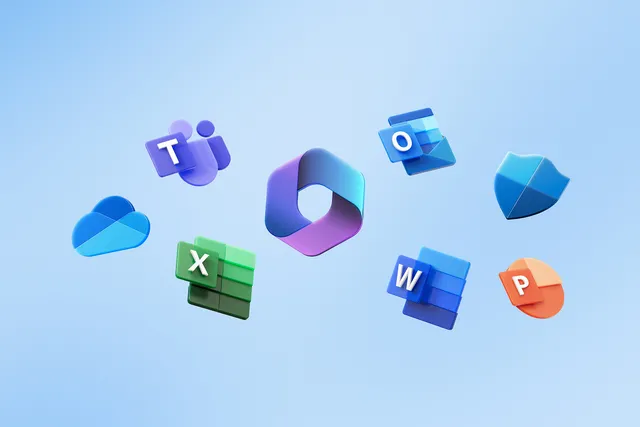Microsoft 365 apps will continue to function after the Windows 10 end of support date, but there could be issues over time.
Microsoft has officially announced that it will no longer support its Office apps, also known as Microsoft 365 apps, on Windows 10 starting October 14, 2025. This move coincides with the end of support for Windows 10 itself, marking a significant shift for businesses and consumers who rely on these tools. If you’re still using Windows 10, it’s time to start planning your transition to Windows 11 to ensure continued support and optimal performance.
The Announcement: A Call for Change
In a recent blog post, Microsoft confirmed the decision: “Microsoft 365 Apps will no longer be supported after October 14, 2025, on Windows 10 devices. To use Microsoft 365 Applications on your device, you will need to upgrade to Windows 11.” This statement underscores Microsoft’s strategy to move its user base to the latest operating system and encourage the adoption of newer technology.
While this announcement may cause some concern, it’s important to note that the apps won’t suddenly stop working on Windows 10 after the cutoff date. According to a support document updated in December, the applications “will continue to function as before.” However, Microsoft cautions that users may experience “performance and reliability issues over time.”
Why Is Microsoft Ending Support?
Microsoft’s decision to phase out support for Office apps on Windows 10 aligns with its broader push to accelerate the adoption of Windows 11. At the Consumer Electronics Show (CES) earlier this year, Microsoft dubbed 2025 as “the year of the Windows 11 PC refresh.” The company is urging users to prioritize upgrading their Windows 10 PCs over other tech purchases.
“We believe that one of the most important pieces of technology people will look to refresh in 2025 isn’t the refrigerator, the television, or their mobile phone. It will be their Windows 10 PC, and they will move forward with Windows 11,” said Yusuf Mehdi, Microsoft’s Executive Vice President and Chief Marketing Officer.
The Push for Windows 11 Adoption
Despite Microsoft’s enthusiasm, the adoption of Windows 11 has been slower than expected. Many users are sticking with Windows 10, and millions of devices are unable to meet the strict hardware requirements for Windows 11, including the Trusted Platform Module (TPM) 2.0, which Microsoft has declared “non-negotiable.”
To address this, Microsoft has taken more aggressive steps to encourage upgrades. Full-screen prompts now urge Windows 10 users to buy new PCs that meet Windows 11’s specifications. This push is part of Microsoft’s strategy to ensure users have access to the latest features, security updates, and performance improvements.
What Happens If You Stay on Windows 10?
If you choose to remain on Windows 10 after October 2025, you may encounter several challenges. While your Microsoft 365 apps will continue to function, the lack of support means you won’t receive critical updates, bug fixes, or new features. Over time, this could lead to reduced performance, compatibility issues, and increased security vulnerabilities.
However, Microsoft is offering a temporary solution for those unable to transition immediately. For the first time, the company is providing Extended Security Updates (ESU) for consumers. This program allows users to pay $30 for an additional year of updates, while businesses can purchase up to three years of extended support. While this offers a temporary reprieve, it’s not a long-term solution.
Why Upgrade to Windows 11?
Upgrading to Windows 11 isn’t just about keeping up with Microsoft’s latest requirements; it’s about embracing the future of computing. Windows 11 offers a host of new features and improvements, including a redesigned interface, enhanced performance, and better security features. It’s designed to support modern hardware and take advantage of the latest advancements in technology.
For businesses, the transition to Windows 11 ensures continued compatibility with Microsoft 365 apps and other critical tools. For individual users, upgrading provides a more seamless and secure computing experience.
Preparing for the Transition
If you’re still using Windows 10, now is the time to start planning your upgrade to Windows 11. Here are a few steps to help you prepare:
- Check Hardware Compatibility: Verify that your current PC meets the minimum requirements for Windows 11. If it doesn’t, you may need to invest in a new device.
- Backup Your Data: Before upgrading, ensure all your important files are backed up to prevent data loss.
- Review Subscription Plans: If you’re using Microsoft 365, check your subscription details to ensure a smooth transition to Windows 11.
- Consider Extended Security Updates: If upgrading immediately isn’t feasible, explore Microsoft’s ESU program for additional time to plan your transition.
Final Thoughts
Microsoft’s decision to end support for Office apps on Windows 10 marks the end of an era and the beginning of a new chapter with Windows 11. While change can be challenging, this shift offers an opportunity to embrace the latest technology and enjoy the benefits of improved performance, security, and functionality.
Don’t wait until the last minute to make the switch. Start planning today to ensure a seamless transition and keep your productivity tools running smoothly. The future of computing is here, and Microsoft is inviting you to be a part of it.










